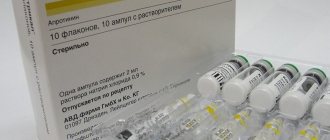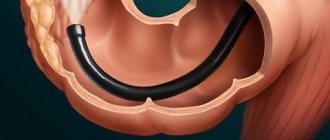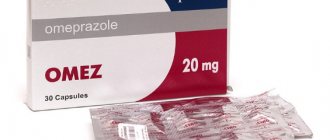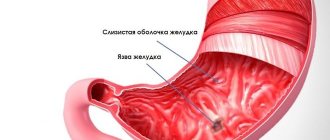Not everyone knows what gastrin is and what it is responsible for in the human body. And it is not surprising, because modern endocrinology has discovered many new hormones that have a huge impact on the functioning of internal organs. And gastrin is one of them.
Judging by the very name of the substance, it would be quite logical to assume that we are talking about the gastrointestinal tract. And indeed it is. Let's try to understand in detail what gastrin is and what its role is in our body.
The main features of the hormone, its functional tasks
So what is this substance?
Gastrin is a hormone that responds to the normal functioning of the digestive tract. In particular, this concerns the activity of the stomach. Gastrin is one of the hormones of the digestive system that helps to identify disturbances in its functioning. To determine the level of this component, a biochemical blood test is performed.
Important! To date, scientists have been able to identify more than 20 types of stomach hormones belonging to the group of gastrins. However, only gastrin 1 and gastrin 2 could be studied almost thoroughly.
Place of synthesis
Where is the hormone gastrin produced? This is a substance that is produced exclusively in the digestive tract. No other organs are responsible for its synthesis and release into the blood.
Thus, gastrin is produced by G cells in the antrum of the stomach. However, a small concentration of it is secreted by the mucous membrane of the small intestine.
The release of gastrin is stimulated by food entering the gastrointestinal tract. This is a purely physiological process that affects the digestion and absorption of food. But there are some factors that can also cause active release of this substance. For example, this occurs when the stomach stretches immediately after the end of the food absorption process.
Gastrin is also actively produced when exposed to nervous stimuli, and under the influence of certain chemical elements - calcium and the hormone adrenaline. Let us consider in more detail the mechanism of action of gastrin and its main tasks in the human body.
Main functions of the hormone
Now let us dwell on the question of how gastrin affects gastric secretion. The peculiarity of this hormone is that the mechanism of its action forms a kind of vicious circle.
So, under the influence of incoming food, the brain receives a corresponding signal and transmits it to the stomach. And the digestive organ, in turn, begins to actively produce the element in question.
Gastrin doesn't have many functions. This is explained by the fact that it exclusively affects the functioning of the gastrointestinal tract, without affecting other organs. Thus, the hormone gastrin stimulates abundant secretion of hydrochloric acid and gastric juice. This process occurs in parenteral cells, and, as a rule, it is associated with the consumption of food containing large amounts of protein. At least, this is how the process occurs in a healthy person.
As you can see, the role of gastrin in the body is quite large. In addition, this hormone is one of the important diagnostic components when a patient is suspected of having gastrointestinal pathologies. Read more about when a blood sample is taken, what it shows and how it is interpreted.
Features of treatment
To normalize gastrin parameters, it is necessary to establish the reasons for its deviation from the norm. Depending on this, a treatment regimen is selected. For peptic ulcers, surgery is often performed.
If Zollinger-Ellison pathology is detected, pancreaticoduodenectomy is indicated. It is aimed at removing tumor formation and performing duodenal plastic surgery. Due to this, it is possible to establish outflow from the pancreas.
In case of narrowing of the pylorus, pyloroplasty is performed. Due to this, it is possible to normalize the free passage of food from the stomach into the duodenum. If hyperplasia is detected, part of the stomach is removed. The procedure is accompanied by a decrease or complete removal of G cells.
In some situations, conservative therapy is sufficient. In this case, medications are prescribed to reduce the parameters of hydrochloric acid. Gastroprotectors are also prescribed to improve the condition of the mucous membranes.
Gastrin analysis: why and when is it done, what does it show?
What does a gastrin blood test mean? The test is not performed on all patients, but only under strict indications. These include suspicion of:
- stomach ulcer;
- atrophic gastritis;
- Zollinger-Addison syndrome;
- stomach cancer;
- anemia, which is one of the accompanying symptoms of Addison-Birmer syndrome.
On a note. One of the most unfavorable reasons for conducting a gastrin test is a suspicion of gastrinoma, and this is a very insidious and dangerous disease. Delay in treatment can lead to serious consequences for the patient’s health.
How to prepare?
Before performing the test, the doctor must instruct the patient in detail on how to prepare for donating blood. Among all types of this hormone, a test is most often performed to determine the level of gastrin 17. In order for the test to give correct data, you should:
- give up alcoholic beverages, tea, coffee, cocoa, and store-bought energy drinks containing caffeine one day before collecting biomaterial;
- a week or several days before the test, you should stop using insulin or other hormonal drugs (if this is not possible, then the data on the therapy should be taken into account by the doctor when interpreting the test results);
- 12 hours before the test you should not eat any food;
- Do not smoke for 4 hours before blood collection.
It is highly recommended to come to the laboratory half an hour before the test, sit down and rest, take a breath. Physical activity may affect the test results, and this must be taken into account by the patient.
How is the procedure done?
A blood test for gastrin is performed exclusively in the morning. The optimal period is from 8 to 11 o'clock. Blood is drawn using a sterile instrument into a special tube. The biomaterial is collected from a vein on the inside of the elbow.
After completing the procedure, the wound is wiped with an alcohol wipe or cotton wool soaked in alcohol. A sterile bandage is then applied over the puncture site. The tube of blood is sent to the laboratory. The patient will have to wait from 7 to 10 days for the test results - it all depends on whether the laboratory works for itself or is an intermediary.
Sometimes it becomes necessary to conduct a stimulated test for gastrin 17. To do this, the patient is injected with a special substance - secretin 10 - 15 minutes before the test. This procedure helps to more accurately determine the diagnosis if the doctor has doubts about its reliability after the first gastrin test.
Data interpretation
The normal levels of the hormone in question directly depend on the patient’s age. This can be seen from the table below.
| Age indicators | Minimum (pg/ml) | Maximum (pg/ml) |
| Newborns up to 4 days old | 120 | 183 |
| Children under 16 years old | 10 | 125 |
| From 16 to 60 years old | 25 | 90 |
| Elderly people (over 60 years old) | No more than 100 | |
Important! It should be borne in mind that gastrin can be increased or decreased when exposed to certain external factors. Lack of sleep, excessive physical activity, overwork, emotional shock or stress - all this can affect the levels of the hormone in the blood. This should be taken into account and, if possible, the influence of these factors on the body should be avoided shortly before blood sampling.
Gastrin: effect on digestion, mechanism of action and determination in the blood
Gastrin is a digestive hormone synthesized by G cells of the stomach and duodenum. Under its influence, a whole cascade of reactions necessary for the normal breakdown of food is activated. By determining gastrin as a hormone in the blood, a number of diseases of the digestive system can be confirmed, especially Zollinger-Ellison syndrome, stomach cancer and atrophic gastritis.
Causes of hormonal imbalance
If basal gastrin 17 is elevated, then the reasons for this deviation in most cases lie in the presence of pathologies, which were mentioned earlier. This:
- stomach ulcer;
- the presence of ulcerative formations on the walls of other organs of the gastrointestinal tract;
- gastritis, occurring in an atrophic form;
- cancer of the stomach.
Note. Less commonly, hypergastrinemia is observed in patients suffering from renal failure.
The reasons why basal gastrin 17 may be low is a pathological abnormality such as hyperthyroidism. It is accompanied by an increase in the secretion of thyroxine and triiodothyronine - the main thyroid hormones. Such a failure entails a disorder in the gastrointestinal tract, resulting in hypogastrinemia.
Some surgical interventions may also be the reason why gastrin is low. In particular, this applies to gastric resection and antrectomy.
Characteristics of the stomach
The main purpose of the stomach is to break down the nutrients that enter it so that the body can use them as building material or provide itself with the necessary energy. To do this, it produces gastric juice and digestive enzymes, which are responsible for the normal course of the digestive process.
Among the components that make up the gastric juice and which are affected by gastrin are hydrochloric acid (during food processing, the acidity is 1.5 to 2 pH, which is enough to dissolve plastic), as well as pepsins, which are enzymes designed to break down food proteins to peptides.
Pepsins themselves are passive, but under the influence of hydrochloric acid they are activated, and they act only in the stomach: as soon as they enter the small intestine with food, they are neutralized.
Reasons for changes in hormone levels
The normal concentration of this hormone in the blood is from 1 to 10 pmol/l. Changes in gastrin levels are observed with the development of the following diseases:
- chronic gastritis, which is accompanied by atrophic changes in the mucosa;
- peptic ulcer (duodenal, stomach);
- anemia, which is caused by vitamin B12 deficiency;
- Zollinger-Ellison syndrome, accompanied by the formation of a malignant tumor of the pancreas;
- gastric oncology;
- chronic nature of renal failure.
What affects hormone secretion?
The stimulated effect on hormone secretion produces:
- vagus nerve and sympathetic system;
- release of insulin, histamine;
- the presence in the human blood or directly in the stomach of protein breakdown products in the form of oligopeptides or free amino acids.
This action allows you to stimulate the digestion process when food enters the stomach, if a person sees it and smells it. The opposite inhibitory effect on the secretion of this hormone is produced by:
- high level of hydrochloric acid;
- prostaglandin E;
- somatostatin;
- endogenous opioids;
- cholecystokinin, secretin.
Zollinger-Ellison syndrome
Gastrin-producing tumor, what is it? This disease was described back in 1955 by two independent scientists, after whom the pathology was named. Patients who turned to them for help had similar symptoms. These patients had abnormal bowel movements, increased acidity, and tumors in the islet part of the pancreas. Scientists have suggested a relationship between these tumors and multiple ulcers in the stomach. It was later discovered that the tumor produces gastrin in large quantities.
Article on the topic: Everything you wanted to know about rotavirus gastroenteritis
Symptoms
Hypergastrinemia in most cases manifests itself as chronic diarrhea. This is due to increased acid formation. The alkaline environment of the stomach cannot cope with the amount of hydrochloric acid that comes from the stomach. As a result, the jejunal part of the intestine encounters unusual acidic contents, which have a damaging effect on the mucous membrane of the organ. With prolonged and regular contact, inflammation occurs, suppression of enzymatic activity, and impaired absorption of fluids and electrolytes. In many cases, diarrhea is the only symptom in patients with Zollinger-Ellison syndrome.
Localization of gastrinoma
In some patients, due to the existing insufficiency of the cardiac sphincter of the stomach, reflux esophagitis develops. With frequent reflux of acidic contents into the cavity of the esophagus, inflammation occurs and a change in the epithelium from multilayered squamous to cylindrical. This condition is called Barrett's esophagus. It is a precancerous disease that requires immediate treatment and acid-lowering therapy.
Description of the analysis
When diagnosing various gastrointestinal diseases, it is often necessary to check the amount of gastrin produced in the body. This hormone controls such an important indicator as the acidity of gastric juice.
The hormone is produced unevenly throughout the day. Its maximum amount in the blood is observed during the daytime, the minimum – from 3 to 7 am. The half-life of this substance is 8 minutes, most of it is excreted through the kidneys.
Hypersecretion of gastrin leads to excessive formation of hydrochloric acid in the stomach, which provokes the development of ulcers. However, in some cases, with an excess amount of this hormone, the level of acidity of gastric juice remains normal. This condition is observed in diseases such as:
- vitiligo;
- anemia;
- atrophic gastritis, etc.
The most important clinical significance of a study to determine the level of gastrin in the blood is the diagnosis of gastrinoma. This disease is also called Zollinger-Ellison syndrome, it is characterized by:
- hyperplasia of the gastric mucosa;
- the formation of ulcers on it;
- diarrhea.
Advice! In Zollinger-Ellison syndrome, the ulcers are usually numerous and range from the esophagus to the entrance to the small intestine.
When is it promoted?
There are several pathological conditions in which gastrin secretion will be significantly increased. One of these is Zollinger-Ellison syndrome. This disease is caused by hyperplasia of gastrin-producing cells of the stomach or the formation of gastrinoma.
In addition, Helicobacter pylori infection can increase gastrin secretion. Helicobacteriosis is a very common phenomenon. When conducting specific studies, almost every third person is found to have bacteria in the gastric mucosa. The increase in gastrin synthesis will not be as critical as in Zollinger-Ellison syndrome, however, it is quite noticeable to provoke gastritis or ulcers.
Article on the topic: How to achieve success in the treatment of various forms of gastroduodenitis?
In addition to the vagus nerve, the sympathetic part of the nervous system can also stimulate gastrin production. This means that under the influence of stress factors, the acidity of the stomach increases and there is a risk of developing erosions and ulcers. The same can be said about glucocorticosteroids. People suffering from systemic diseases and forced to take glucocorticoids for life are susceptible to the development of pathological disorders in the stomach wall. A similar reaction is observed in people with Cushing's syndrome. This disease is accompanied by hypercoticism, which negatively affects the synthesis of prostaglandins. Suppression of prostaglandins by a feedback mechanism leads to hyperproduction of gastrin, which again brings us back to the problem of acidity and ulceration. To prevent such reactions, it is recommended to combine prednisolone, dexomethasone, medrol with proton pump inhibitors. It should be added that long-term use of PPIs leads to the development of “acid rebound” when the drug is abruptly discontinued, so it is recommended to reduce the dosage gradually.
The information given in the text is not a guide to action. To obtain more detailed information about your disease, you should contact a specialist.
Protein digestion begins in the stomach
The breakdown of proteins into amino acids begins in the stomach, continues in the duodenum and ends in the small intestine. In some cases, the breakdown of proteins and the transformation of amino acids can also occur in the large intestine under the influence of microflora.
Proteolytic enzymes are divided according to the characteristics of their action into exopeptidases, which cleave off terminal amino acids, and endopeptidases , which act on internal peptide bonds.
In the stomach, food is exposed to gastric juices, which include hydrochloric acid and enzymes. Gastric enzymes include two groups of proteases with different pH optimums, which are simply called pepsin and gastrixin. In infants, the main enzyme is rennin.
Regulation of gastric digestion
Regulation is carried out by nervous (conditioned and unconditioned reflexes) and humoral mechanisms. Humoral regulators of gastric secretion include gastrin and histamine .
Gastrin is secreted by specific G cells of the pylorus:
- in response to stimulation of mechanoreceptors,
- in response to irritation of chemoreceptors (products of primary protein hydrolysis),
- under the influence of n.vagus.
Next, gastrin through the systemic circulation reaches and stimulates the main, parietal and accessory cells, which causes the secretion of gastric juice, mostly hydrochloric acid . It also provides histamine , affecting ECL cells (enterochromaffin-like cells).
Histamine, formed in enterochromaffin-like cells of the gastric mucosa (fundic glands), enters the bloodstream, interacts with H2 receptors on the parietal cells and increases the synthesis and secretion of hydrochloric acid .
Acidification of gastric contents (pH 1.0) through a negative feedback suppresses the activity of G-cells and reduces the secretion of gastrin and gastric juice.
Hydrochloric acid
One of the most important components of gastric juice is hydrochloric acid. Parietal (parietal) cells of the stomach take part in the formation of hydrochloric acid, secreting H + ions. The source of H+ ions is carbonic acid produced by the enzyme carbonic anhydrase. During its dissociation, in addition to hydrogen ions, carbonate ions HCO3 – are formed. They move along a concentration gradient into the blood in exchange for Cl – ions. gastric cavity via an energy-dependent antiport with K+ ions ( H+,K+-ATPase ), chloride ions are pumped into the gastric lumen also with the expenditure of energy.
When normal HCl secretion is disrupted, hypoacid or hyperacid gastritis occurs, which differ from each other in clinical manifestations, consequences and required treatment regimen.
Synthesis of hydrochloric acid
Functions of hydrochloric acid
- Denaturation of food proteins.
- Bactericidal action.
- The release of iron from the complex with proteins and its conversion into a divalent form, which is necessary for its absorption. Other metals are released similarly.
- The release of various organic molecules tightly bound to the protein part (heme, coenzymes - thiamine diphosphate, FAD, FMN, pyridoxal phosphate, cobalamin, biotin), which allows the vitamins to be subsequently absorbed.
- Conversion of inactive pepsinogen into active pepsin.
- Reducing the pH of gastric contents to 1.5-2.5 and creating an optimal pH for pepsin to work.
- After the transition to the duodenum, stimulation of the secretion of intestinal hormones and, consequently, the secretion of pancreatic juice and bile.
The acidic reaction of gastric juice is mainly due to the presence of HCl , and to a much lesser extent the H2PO4 – , lactic acid can contribute .
The totality of all substances in gastric juice that can be proton donors constitutes total acidity. Hydrochloric acid, which is in combination with proteins, mucopolysaccharides of the mucous membrane and digestion products, is called bound hydrochloric acid, the remaining part is called free hydrochloric acid. The content of free HCl is subject to change, while the amount of bound HCl is relatively constant.
The effect of gastrin and histamine on parietal cells is reduced to increased work of H + , K + -ATPase. The action of gastrin is to activate the calcium-phospholipid signal transduction mechanism, while histamine acts through the adenylate cyclase mechanism.
Changes in stomach acidity
A hypoacid state develops with a decrease in the activity and/or number of parietal cells that synthesize HCl. As a result, a wide variety of consequences can develop, directly or indirectly related to the failure of hydrochloric acid to fulfill its functions:
- decreased digestion of proteins both in the stomach and intestines,
- activation of fermentation processes in the stomach, bad breath,
- activation of the process of protein decay in the large intestine, intestinal turmoil and flatulence,
- penetration of undigested foods into the blood and, as a result, allergic reactions ,
- decreased release from proteins and the occurrence of mineral deficiency ( iron , copper , magnesium , zinc , iodine , etc.),
- decreased release from proteins and absorption of a number of water-soluble vitamins – development of hypovitaminosis (B1, B2, B6, B12, H),
- decreased synthesis of intrinsic factor and decreased absorption of vitamin B12 ,
- decreased secretion of intestinal hormones and, as a consequence, decreased secretion of bile and pancreatic juice ,
- impaired digestion and absorption of lipids and, as a consequence, the development of hypovitaminosis of fat-soluble vitamins.
A hyperacid state develops with increased activity of parietal cells. Can lead to clinical manifestations in the form of inflammation of the stomach wall, erosion and peptic ulcer of the stomach and duodenum.
Pepsin
Pepsin is an endopeptidase, meaning it cleaves internal peptide bonds in protein and peptide molecules. It is synthesized in the main cells of the stomach in the form of the inactive proenzyme pepsinogen, in which the active center is “covered” by the N-terminal fragment. In the presence of hydrochloric acid, the conformation of pepsinogen changes in such a way that the active center of the enzyme “opens”, which cleaves off the residual peptide (N-terminal fragment), i.e. autocatalysis occurs. As a result, active pepsin is formed, which also activates other pepsinogen molecules.
Conversion of pepsinogen to pepsin
Pepsin has low specificity; it mainly hydrolyzes peptide bonds formed by the amino groups of aromatic amino acids (tyrosine, phenylalanine, tryptophan), less and more slowly - by the amino groups and carboxy groups of leucine, glutamic acid, etc. The optimum pH for pepsin to work is 1.5-2.0.
Linkages cleaved by pepsin
Gastricin
Gastricsin is close in its functions to pepsin; its amount in gastric juice is 20-50% of the amount of pepsin. It is synthesized by the main cells of the stomach in the form of progastricin (proenzyme) and activated by hydrochloric acid . The optimum pH of gastricsin corresponds to 3.2-3.5 and this enzyme is important when feeding on dairy and plant foods, which weakly stimulate the secretion of hydrochloric acid and at the same time neutralize it in the lumen of the stomach. Gastricin is an endopeptidase and hydrolyzes bonds formed by carboxyl groups of dicarboxylic amino acids.
During the day, about 2 g of pepsin is synthesized. The volume of work of pepsin is approximately 10% of all peptide bonds of proteins entering the stomach.
The presence in the stomach of two proteases, operating at different pH levels, allows the body with pepsin , and the proteins of vegetable and dairy foods with gastricsin











